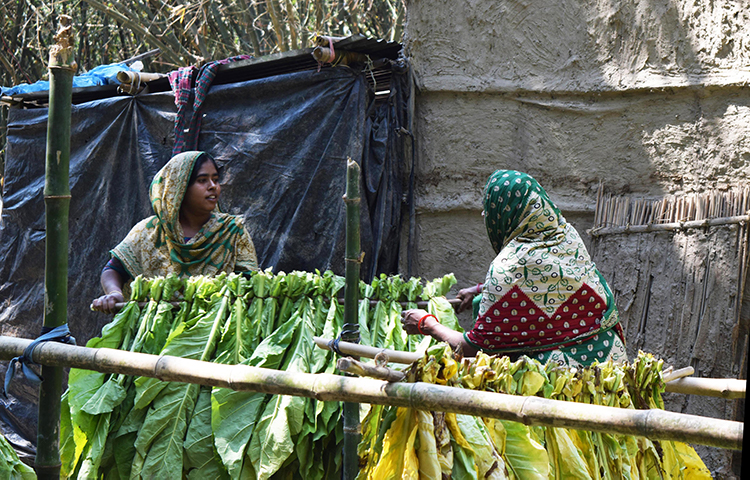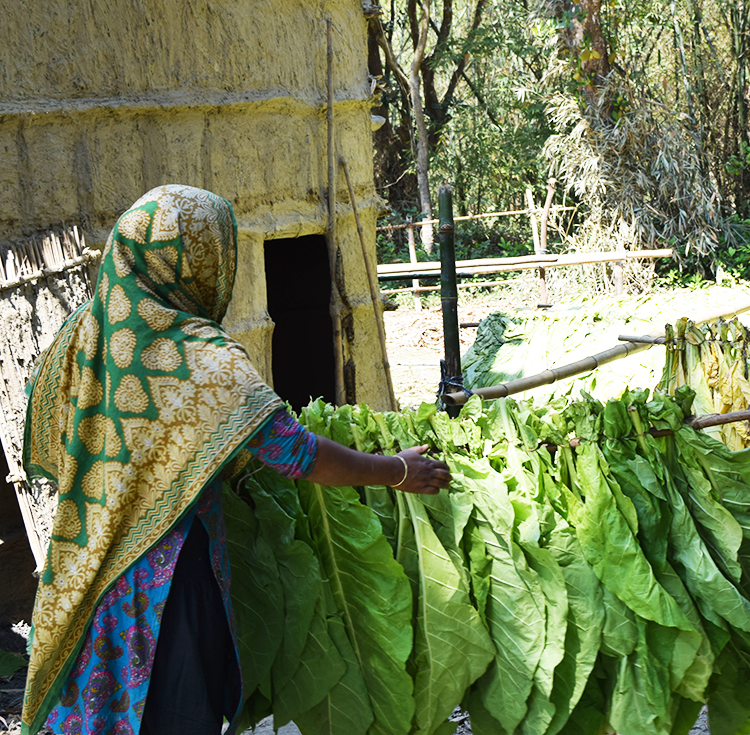
Farida Akhter
Equality of women in paid work has been a long demand of the women’s movement and is one of the primary focuses in the Sustainable Development Goal 5. The SDG 5, among the 17 goals, is about empowering women and promoting gender equality. Ending all forms of discrimination against women and girls is a basic human right; and also a pre-condition for achieving overall sustainable development. Like other countries, in Bangladesh, patriarchal social, economic and cultural factors contribute to the unequal and discriminatory position of women in the society; particularly reflected in the paid works. According to UNDP report, globally in the paid works outside of agriculture, women’s involvement has increased from 35% to 41%, i.e. only 14% increase from 1990 to 2000. With this slow progress rate it will be hard to achieve gender equality by 2030.
Global concerns such as the health hazards of tobacco consumption are well-acknowledged; being a cause of non-communicable diseases and preventable deaths. The WHO Framework Convention on Tobacco Control (FCTC) has been in force since 2004 and is applied in many countries of the world through formulation of respective national laws. However, FCTC focus has been centered on the demand side and controlling smoking. But unlike the developed countries, in the South East Asian region women are facing the threat from the supply side, i.e. tobacco cultivation as well as high users of smokeless tobacco.
Women’s involvement in various stages of tobacco cultivation and processing has remained out of sight of the policy makers at the government and also at the international organizations like UNDP. Tobacco leaf cultivation started in Bangladesh in the 1960s, much before adoption of FCTC, controlled directly by the British American Tobacco Company with, Burley, Flue-Cured Virginia (FCV) – Nicotiana Tabacum, suitable for premium brands of cigarettes. In the last two decades, tobacco cultivation increased more rapidly because major tobacco industries have shifted from the High-income countries (HICs) to Lower-middle Income countries (LMICs) for lower cost production environments. The WHO -FCTC addresses the need for discouraging tobacco cultivation and support for shifting out of tobacco to alternative crops, in the Articles 17 and 18. This has led to high production cost in the HICs with withdrawal of subsidies to tobacco leaf cultivation.

Mabia Khatun says, during cultivation of the Virginia leaves (used for premier cigarettes) in the field we have to help with fertilizers and for weeding. After harvesting of the leaves we work for 72 hours at a time for each load of leaves in the Kiln for curing. Leaves need three days for complete curing inside the Kiln. During that time we cannot leave furnace without feeding fuel in it. We cannot sleep nor have the time to take rest.
Bangladesh is among the few Asian countries having high concentration of tobacco leaf cultivation. With fertile land around the major rivers Teesta and Padma and the forest areas of the Hill Tracts and availability of cheap and unpaid family labour, tobacco in grown in more than 50,000 acres of land under direct sponsorship of national and multinational tobacco companies. The land is used for producing tobacco leaves for smoked tobacco products such as cigarettes, bidi and smokeless tobacco such as zarda and sadapata used with betel quid and gul applied on the gums. .

In Bangladesh, the number of smokers is lower than those using smokeless tobacco products. One in five of adult population (22 million) use smokeless tobacco. Among adult women, smokeless tobacco use is 24.8%, smoking rate is less than 1%. In contrast, use rate of smokeless tobacco among adult men is 16.2% while smoking is 36.2%. Overall among the 37.8 million tobacco users in the country, smokeless tobacco use is higher (20.6%) than smoking 18% (Global Adult Tobacco Survey GATS, 2017). Tobacco leaf variety. Motihari tobacco (Nicotiana-Rustica), is used for producing smokeless tobacco. Motihari leaves are also exported to different European countries through Indian and European business portals.

Tobacco is not only harmful for its users, it also poses a threat to those involved in its cultivation. The economic assessment of the so-called ‘profitable’ tobacco cultivation fails to show the hidden cost of unpaid family labour. These unpaid family labour include wife and young children mostly girls in tobacco farmers families. In a UBINIG research on tobacco cultivation during 2009 to 2012, the unpaid family labour was found to be one-third of the human labour used. Women and children were also hired as labour at a discriminatory wage rate with harder works and longer working hours. As family labours, women tend to be more responsible for tobacco work at different stages of cultivation, particularly after harvesting of the leaves; they have to work round the clock. Hired male labors are paid more than hired female labors for an equal number of worked hours. For example, in Kushtia, women received two-third of a men’s wage for post harvesting leaf curing works; Tk. 500 (6 USD) for men and Tk. 300 (4 USD) for women per day.

For processing of Motihari tobacco, women are engaged as unpaid family labour and low wage hired labour at a discriminatory wage rate of less than (150) 2USD for women against Tk 300 ( 4 USD) for men for sun curing of the leaves. More importantly, as unpaid family labour, women are exploited more without considering the working hours, health impacts on women in reproductive age and aged women for occupational hazards and violation of the rights of the young girls for education.

The concern is that this sector remains out of policy decisions on the questions of equality of women. The focus is more on discrimination in domestic work, agricultural and non-agricultural works, but ignores tobacco production as a sector involving women. Tobacco consumption as a public health and cultivation as environment concern have been well-acknowledged but tobacco production as a barrier to achieving equality of women in paid work remains unaddressed in the assessment of performance of sustainable development goal 5. It must be acknowledged.
Alema further said, while handling the leaves we inhale the poison of these leaves. We lose appetite, feel feverish.
Men cannot do the tobacco work alone. They need the help of women in their families. However, despite so much hard work with the tobacco leaves, we need to take care of the children and cook at least two meals.
Mabia Khatun does not want to continue tobacco cultivation but her husband is persuaded by the company and he listens to them. “We feel dis-empowered by tobacco, as it intervenes into our decision making about food production. We work hard but we do not have any voice in it. We do not have any control over the income earned from tobacco.”
“I do not get paid for the work I do for tobacco, because I am the wife, it is my husband’s work”.
It may be noted that the theme for World No Tobacco Day 2017 was “Tobacco – a threat to development.” This theme was set to encourage countries to include tobacco control in their national responses to 2030 Sustainable Development Agenda. Unfortunately the countries in looking at tobacco as a barrier to achieving the goals of SDGs, highlighting different aspects of tobacco control and opposing tobacco industry interferences, did not focus the SDG5, i.e. on gender equality.
Tobacco not only poses threat to development but also to achieving gender equality.
This article is based on a study on Women and smokeless tobacco supported by STOP project, an initiative of the Bloomberg Philanthropies
August, 2020
Author: Farida Akhter, Executive Director, UBINIG and Convener of Alliance of Women in Tobacco (Tabinaj)